Primary and Secondary Schools in Spain

Academia Dante

Almuñecar International School

Aloha College

Altaviana

American School of Bilbao

American School of Madrid

American School of Valencia

Artxandape Ikastola

Baleares International School

British School of Alicante

C.E.S Santa María de los Ángeles

Cambridge House Community College

Caxton College

Centro Huerta del Rey

Chester College International School

Colegio Irabia

Colegio Logos

Colegio los Sauces

Colegio Mercedarias

Colegio Villa de Griñón

El Limonar International School

El Plantío International School Of Valencia

English School Los Olivos
Escuela Waldorf de Tenerife Valle de Güímar-Canarias

Hastings School

I.E.S. Ausias March
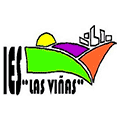
I.E.S. Las Viñas

IES Albenzaide

IES Angel de Saavedra

IES Broch I Llop

IES Faro de Maspalomas

IES La Jarcia

IES Massamagrell

IES Puerto de la Cruz – Telesforo Bravo

International School Of Madrid
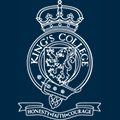
King's College - The British School of Madrid
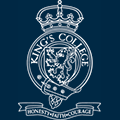
King's College Infant School

Laude Newton College
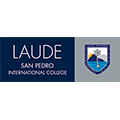
Laude San Pedro International College

Mar Azul Bilingual school

Mont-perdut

Oak House British School

Oakeley College

Pare Manyanet Reus

Runnymede College

Sage College. The British School of Jerez

Shoreless Lake School

Sierra Bernia School

SIES en Arona
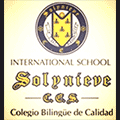
Solynieve CES

Sotogrande International School

St. Anthony's College

St. Peter's School

Sunland International School

Sunny View School

Swans International Primary School
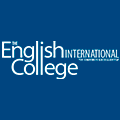
The English International College

Wingate School

Workshop R2
Primary and Secondary Schools in Spain by City:
Alcala de HenaresAlfaz del PiAlicanteAlmuñecarAronaArroyomolinosBarcelonaBenicarlóBerangoBilbaoBurgosCadizCastellón de la PlanaCordobaEl PalmarEl Puerto de Santa MariaElcheEsteponaFuengirolaGandíaGetafeGodellaGranadaGriñónHuescaHumanes de MadridLa MoralejaLa Roda de AndalucíaLas Palmas de Gran CanariaLas RozasLuqueMadridMalagaMarbellaMaspalomasMassamagrellMedio CudeyoMollinaOrenseOviedoPalma de MallorcaPamplonaPaternaPontevedraPozuelo de AlarcónPuerto de la CruzPuerto RealPuzolReusRevilla de CamargoRocafortSan Miguel de Abona San Pedro de AlcántaraSan SebastianSantiago de CompostelaSevilleSoto de ViñuelasSotograndeTafallaTafira AltaTalavera de la ReinaTenerifeTerrassaTorreviejaTotanaUbriqueValdepeñasValenciaValladolidVillanueva de la SerenaVillarrealVitoriaXubia-NedaAbout Primary and Secondary Schools in Spain
Primary and secondary education in Spain can roughly be separated into 4 stages: pre-school, primary school, secondary school, and college prep. At all four levels, education is provided free of charge by the state, although there are private schools as well for parents who prefer and can afford them. The middle two stages are obligatory, while the 1st and 4th are optional.
Pre-school, the first level of Spanish education, is for kids ages 3-6. Although it is not mandatory, it is a popular option for parents who are either busy or who do not want their kids to miss out on these important years of socializing and learning. Most children in Spain attend pre-school. The second stage of a Spanish child’s education is primary school, which lasts from age 6-12 and is roughly the equivalent of first grade through sixth grade in the American system. Education at this stage is mandatory.
The mandatory portion of secondary school is known as the ESO (Educación Secundaria Obligatoria), and represents the third step in the four-step process. This stage lasts until age 16, at which point children are no longer required by law to stay in school. In practice, however, many choose to do so anyway. The final step in Spanish secondary education is known as the Bachillerato, and it is typically a college preparatory stage lasting from age 16 to 18. Education at the Bachillerato level includes a set of core courses such as history, Spanish language, science, and philosophy, along with electives that depend upon student interest. These electives could include art, music, advanced math and science, foreign languages, religion, or a number of other areas. This flexibility may contribute to the popularity of Bachillerato-level education in Spain. Like in other countries, teenagers are often fiercely independent, and so they may be more likely to continue with their education if they are given some freedom and ownership over its direction.
Spain, with its long and storied history of intellectual contributions (especially in the areas of geography, science, literature, and politics) is a nation with a healthy respect for the importance of education. Since education always begins in early childhood and is the most important duty for a young child, families, teachers, and government institutions in Spain put significant time and resources into educating their children at the primary and secondary levels.
If you’re moving to Spain with young children, chances are you’ve put a lot of thought into figuring out how to ensure that they get a high-quality education. Fortunately, Spain has one of the best education systems in the world, as evidenced by its extraordinary enrollment ratio of 93.7%. This, along with a high youth literacy rate, places Spain in the top 5 nations of the world when it comes to primary and secondary education. Knowing that a good education can help shape the rest of a child’s life, many parents are rightly concerned about ensuring that they can find good schools wherever they go. In addition, it is important for them to be aware of the relevant laws and regulations that are in effect in the host country.
All children in Spain must complete the same course of mandatory education. Compulsory education in Spain begins at age 6, which is the 1st year of primary school–however, by the time they reach this age, most Spanish children have already completed two to four years of non-mandatory preschool. Primary school last until age 12, and covers a comprehensive range of topics including geography, history, language skills, math, basic science, and of course music and the arts.
At age 12, students in the Spanish system move on to the ESO (Educación Secundaria Obligatoria) level, which includes the final 4 years of mandatory education. Many Spanish students stay in school for an additional 2 years after completing their ESO. Called the Spanish Baccalaureate, this additional schooling prepares students for college and enables them to take elective courses in the arts, sciences, or humanities. While not required by law, completion of the Spanish Baccalaureate is common, and is highly advisable whenever possible.
In addition to its numerous public and privately-funded primary and secondary schools, Spain is also home to international schools that cater specifically to the needs of children from other countries. These schools typically offer classes in English, and may also base their curriculum, teaching style, and grading system on North American or British standards. This is a good way to provide continuity if your child’s stay in Spain is going to be brief. Primary and secondary coursework at international schools in Spain is generally recognized by foreign schools, so children will not face the unpleasant situation of repeating a grade when they return to their home country. Mandatory schooling laws apply to international schools just as they would to any other.
In Spain, education is highly prized as the backbone of a healthy society, and significant investment on the part of the government and private actors has made Spain a global leader in education. For expatriates living in the country, this can be a considerable advantage–Spanish schools are in many cases better than those in the home country. There is, then, no reason to be concerned about the quality of education that your children can receive while you are living and working in Spain.

